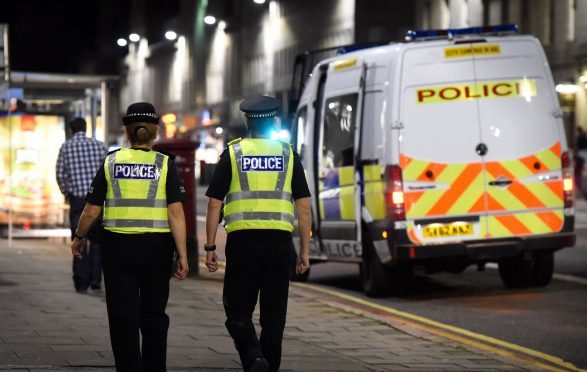The north-east has borne the brunt of police officers leaving the single force since it was created, new figures have revealed.
More than 3,000 officers have walked away from Police Scotland since it was formed nearly four years ago.
And figures obtained by the Scottish Conservatives under freedom of information rules show the North East Division has racked up the second highest total – with 286 leaving.
Despite Lanarkshire and Edinburgh both having more officers only Glasgow, which is the largest division in Scotland, has suffered more losses than the base covering Aberdeen, Aberdeenshire and Moray.
The single force has already been condemned after it was revealed officers in the north-east were now being taken off the front line to cover admin jobs that were previously done by staff that have not been replaced.
A survey of staff last year revealed a third were wanting to quit within the next three years.
Scottish Conservatives leader Ruth Davidson claims 40,000 years of experience has been lost across the country in the wave of walk outs.
And the Tory is adamant more veteran staff are needed to cope with the challenges of modern policing.
She said: “While, of course, there are plenty of people who may wish to take early retirement, these figures point to something deeper.
“More than 3,000 offices have left Police Scotland since its inception and thousands more say they are considering following them out the door.
“Every organisation needs a mix of new blood and experience but Police Scotland has lost great swathes of experienced officers just as huge changes have been brought into policing.
“It is essential Police Scotland has a balanced demographic going forward, and doesn’t shun the experience those longer serving officers bring.”
A total of 129 officers have left the Highlands and Islands during the same time.
At the end of September there were the equivalent of 17,245 full-time police officers working in Scotland.
Scottish Government statistics show that is an increase of about 1,000 from the total recorded at the end of March 2007.
The Scottish Conservatives’ figures, which cover from April 1, 2013 to October 31 this year, show retirement is the most common reason for staff leaving with nearly 2,000 nationally citing that as the reason.
About 500 staff resigned due to “personal reasons” and more than 400 stepped down after securing another job away from the police.
The statistics also revealed 20 have been sacked, 24 have died and 88 have transferred to another force.
Peter Blair, head of resource management at the force, said: “The number of officers retiring is dependent on a number of things but mostly officers retire after 30 years’ service.
“We are aware of the patterns going forward and that we can cover any rise and fall as required in our normal recruitment activity.
“We continue to maintain officers at the current level and recruit accordingly, and we have sufficient applications to manage to do that without the need to offer any additional incentives.
“We do not see any issue with the small anticipated rise in retirement rates in the near future and treat it normally as the rise and fall expected.
“Most officers retire in their late 40s or early 50s after completing 30 years’ service, and any who wish to remain are welcome to do so, however beyond 60 years of age they currently need to agree continued employment with the organisation.”










